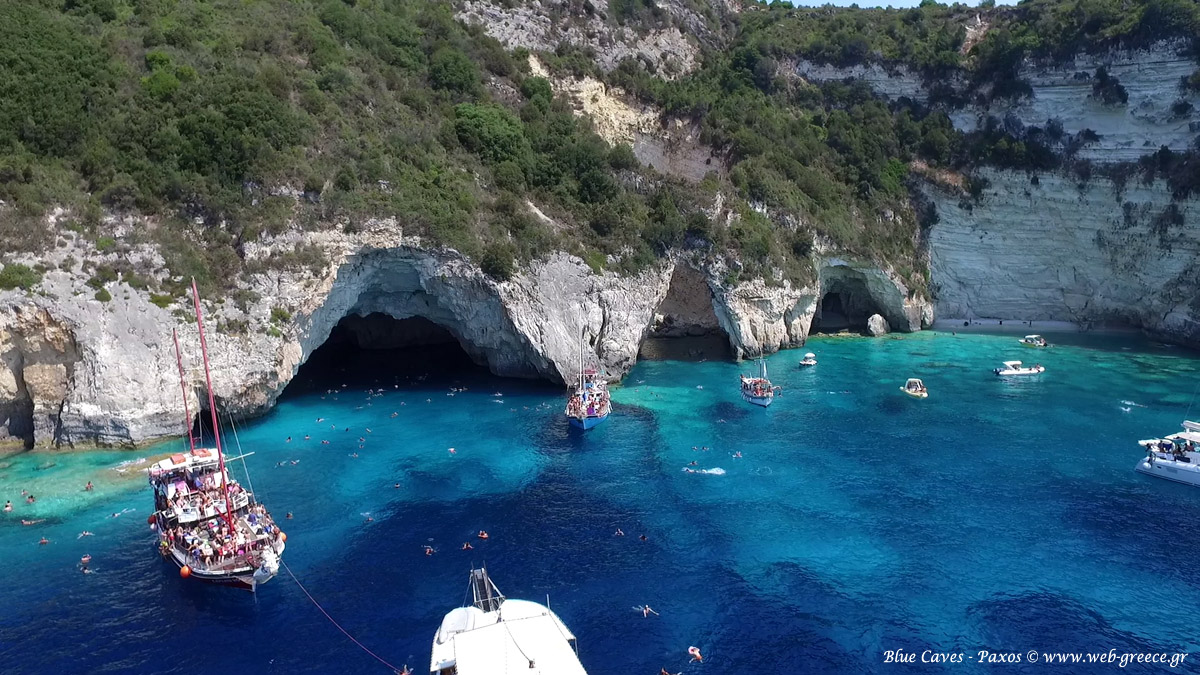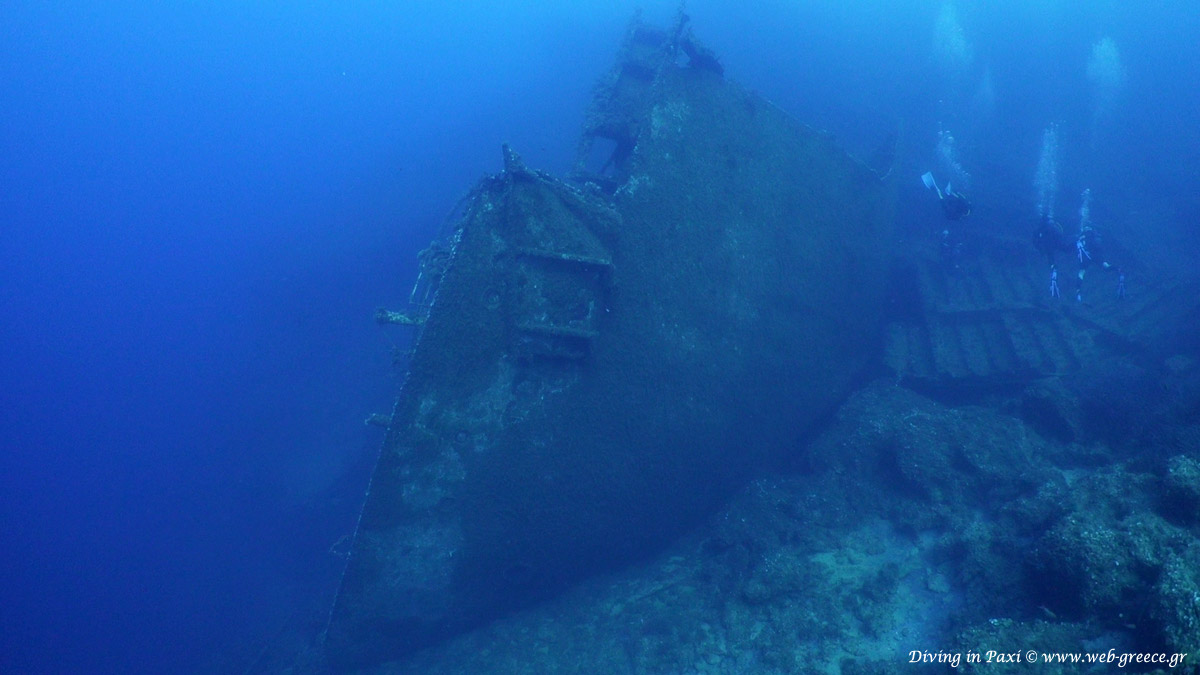Paxos is a small island of the Ionian Sea in the Ionian Sea. It is located 7 miles south of Corfu, at a distance of 8 miles from the mainland coast and administratively belongs to the Prefecture of Corfu. The capital of Paxos is the picturesque Gaios, which is naturally protected by two islets, Panagia and Agios Nikolaos. The population according to the 2001 census is 2,374 inhabitants and its area 25,322 sq. km.
It’s a little heaven on earth. Thanks to the picturesqueness and authenticity of the landscape, the nobility, the remarkable tourist infrastructure and the cosmopolitan air, the island attracts a large number of visitors every year.
According to mythology, the island was created by Poseidon, who with a blow of his trident cut off a part of Corfu, in order to house there his love with Amphitrite. That is why the symbol of the Paxians is the trident.
Paxos, like all the other Ionian islands, are characterized by rich vegetation and are particularly famous for their vast olive groves. The picturesque natural harbors, the impressive caves, the 64 churches, the thermal springs, the wonderful beaches with crystal clear waters and the great cultural heritage of the island, enchant the visitor.

The capital and port of the island is Gaios, which still retains its traditional color. The islets of Agios Nikolaos and Panagia embrace the port, providing it with natural protection. In Agios Nikolaos there is a Venetian fortress, small churches, as well as a windmill, while on the islet of Panagia there is the Monastery of the same name. In Gai, visit the churches of the Holy Apostles and the Paleochristianiki of Agia Marina. The Paxos Museum also operates here.
On the north side of the island is the picturesque settlement of Lakka. The traditional houses, narrow alleys and narrow squares take the visitor on a journey. Here dominates the imposing Lighthouse from where you can admire the sunset, the sea cave of Ypapanti and the house of Drihoutsis, a remarkable example of Heptanisian architecture. You can enjoy the sea in Kanoni, Planous and Arkoudaki.
On the Eastern coast of the island is Loggos with its traditional taverns. It is worth visiting the church of ZoodochosPigi, the old olive mill and the soap factory of Anemogiannis. You can swim at the beautiful beaches of Levrechi, Marmari and Monodendri.
In the village of Magazia, visit the church of the Holy Apostles, the area of Kastanida with its wild beauty of the landscape, Ortholithos, the impressive vertical rock in the sea and the imposing rocky landscape of Erimitis.
Antipaxos are only 3 nautical miles from the port of Gaios. It is an island overgrown with vines, where the images of natural beauty and the amazing beaches with white sand and crystal clear blue waters captivate the visitor. Be sure to try the excellent local wine. Vrika and Voutumi beaches are very beautiful.
In Paxos you will admire the countless natural beauties, you will taste nature in all its glory, you will enjoy romantic walks in the picturesque settlements and you will have fun until morning at the holiday resorts of the island.
The beaches of Paxos are one of your best choices in the Ionian. Clear blue waters and golden sands in an idyllic landscape that stands out in the surrounding area. You can use boats to touch uncrowded beaches and swim in waters you may not have seen before.
Paxos are characterized by their dense vegetation and are mainly famous for their vast olive groves, which date back hundreds of years, and small vineyards. Paxos is an island with many caves and sulfur springs. Since the 1960s, the inhabitants of Paxos have been engaged in tourism, fishing and the production of olive oil and wine. Paxos olive oil is of very high quality and is also used in the production of soap and shampoo.
There is a seatrack at Paxos Beach

